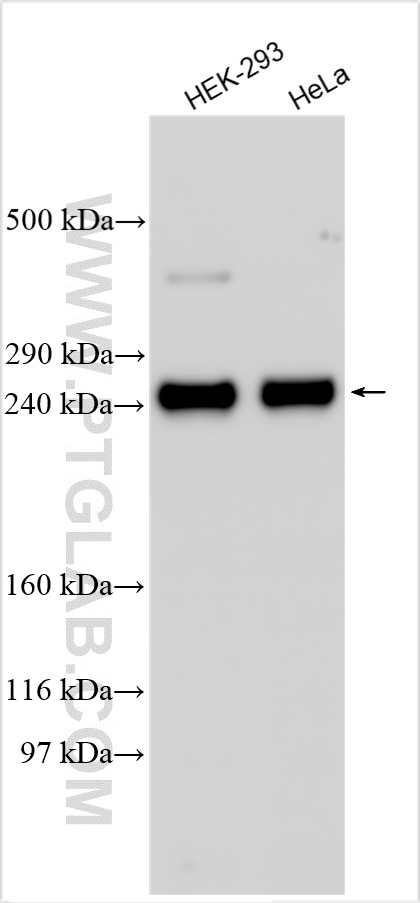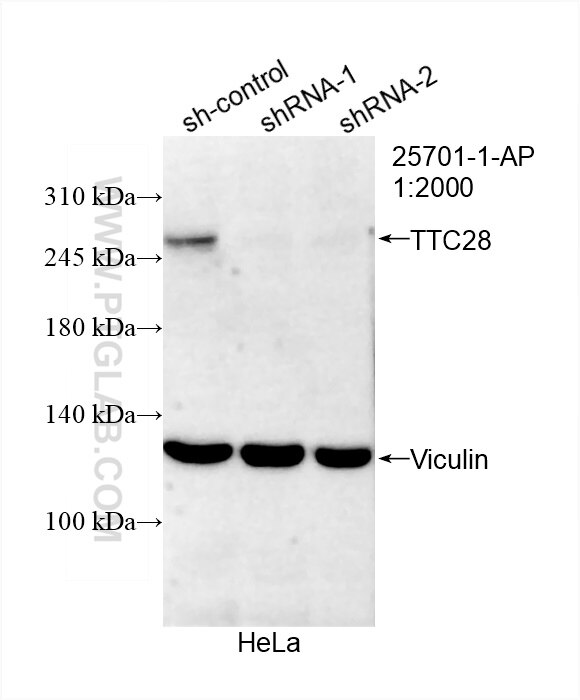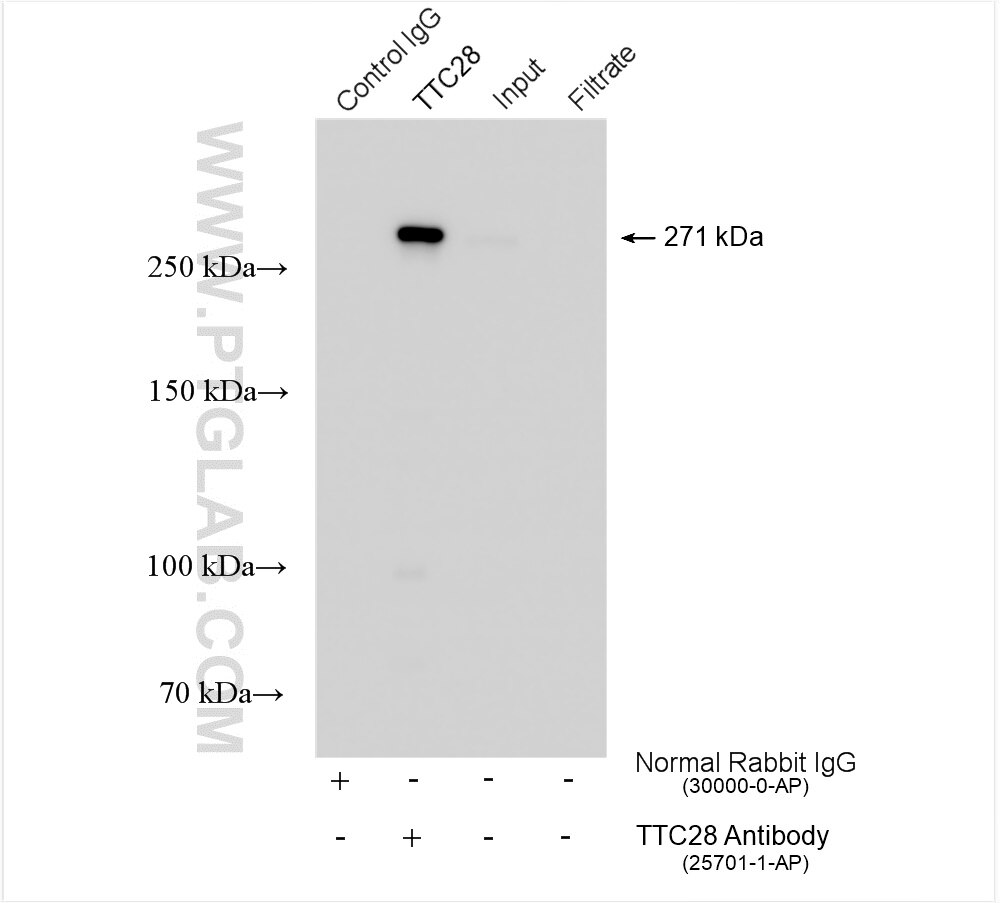Tested Applications
| Positive WB detected in | HEK-293 cells, HeLa cells |
| Positive IP detected in | HEK-293 cells |
Recommended dilution
| Application | Dilution |
|---|---|
| Western Blot (WB) | WB : 1:1000-1:4000 |
| Immunoprecipitation (IP) | IP : 0.5-4.0 ug for 1.0-3.0 mg of total protein lysate |
| It is recommended that this reagent should be titrated in each testing system to obtain optimal results. | |
| Sample-dependent, Check data in validation data gallery. | |
Product Information
25701-1-AP targets TTC28 in WB, IP, ELISA applications and shows reactivity with human samples.
| Tested Reactivity | human |
| Host / Isotype | Rabbit / IgG |
| Class | Polyclonal |
| Type | Antibody |
| Immunogen | TTC28 fusion protein Ag22465 Predict reactive species |
| Full Name | tetratricopeptide repeat domain 28 |
| Calculated Molecular Weight | 2481 aa, 271 kDa |
| Observed Molecular Weight | 240-271 kDa |
| GenBank Accession Number | BC016465 |
| Gene Symbol | TTC28 |
| Gene ID (NCBI) | 23331 |
| RRID | AB_3085817 |
| Conjugate | Unconjugated |
| Form | Liquid |
| Purification Method | Antigen affinity purification |
| UNIPROT ID | Q96AY4 |
| Storage Buffer | PBS with 0.02% sodium azide and 50% glycerol, pH 7.3. |
| Storage Conditions | Store at -20°C. Stable for one year after shipment. Aliquoting is unnecessary for -20oC storage. 20ul sizes contain 0.1% BSA. |
Background Information
TTC28 is a large protein required during the cell cycle for condensation of spindle midzone microtubules, formation of the midbody, and completion of cytokinesis. RT-PCR ELISA detected highest TTC28 expression in adult ovary and lung, followed by kidney and liver. Lower expression was detected in all other adult and fetal tissues examined except testis, which showed no expression.
Protocols
| Product Specific Protocols | |
|---|---|
| WB protocol for TTC28 antibody 25701-1-AP | Download protocol |
| IP protocol for TTC28 antibody 25701-1-AP | Download protocol |
| Standard Protocols | |
|---|---|
| Click here to view our Standard Protocols |







